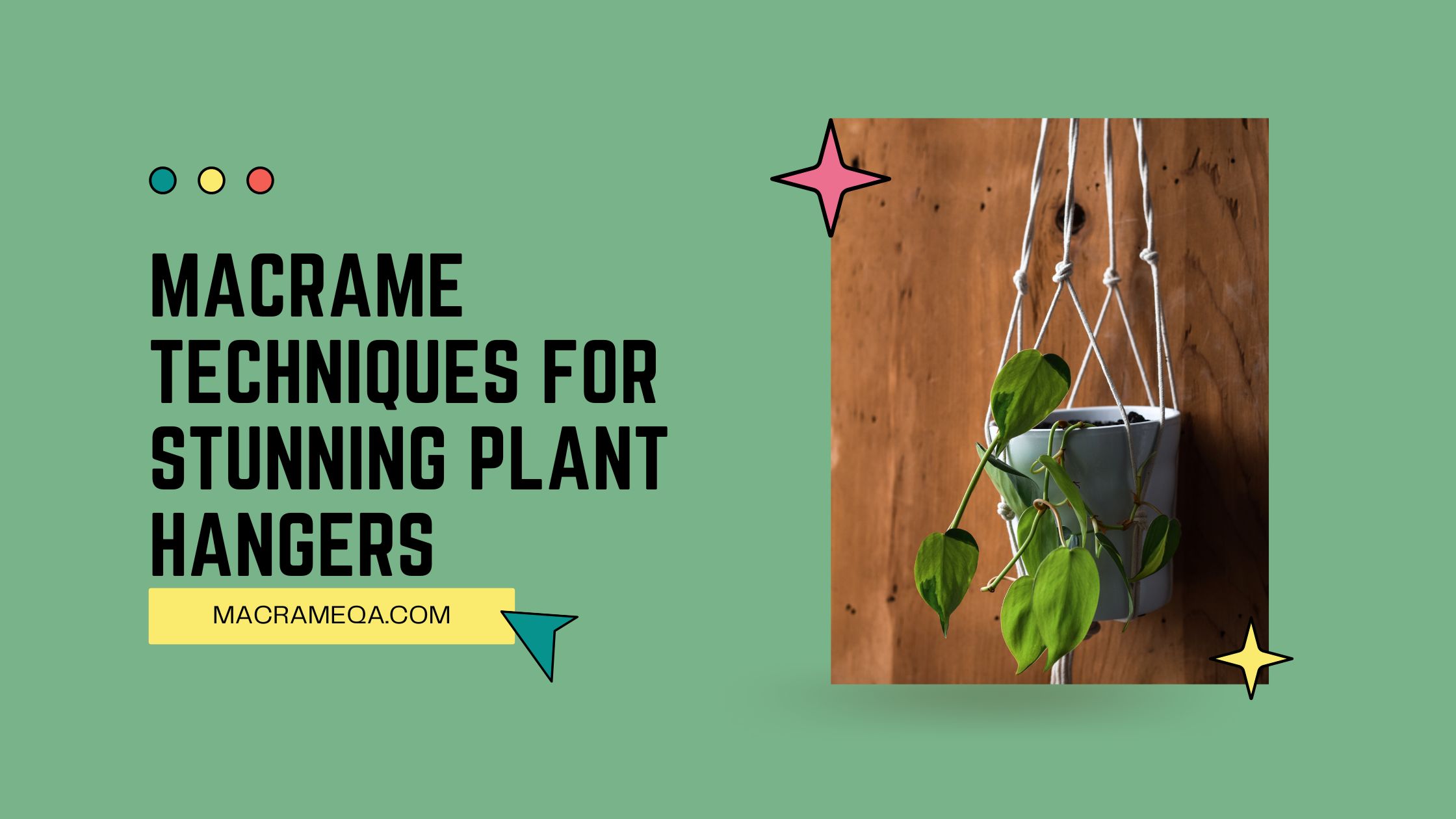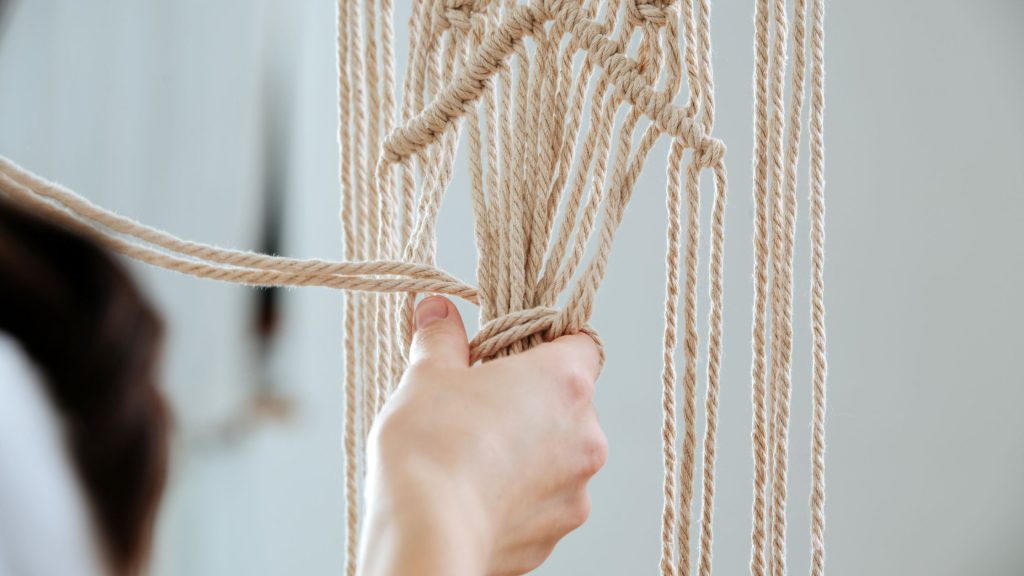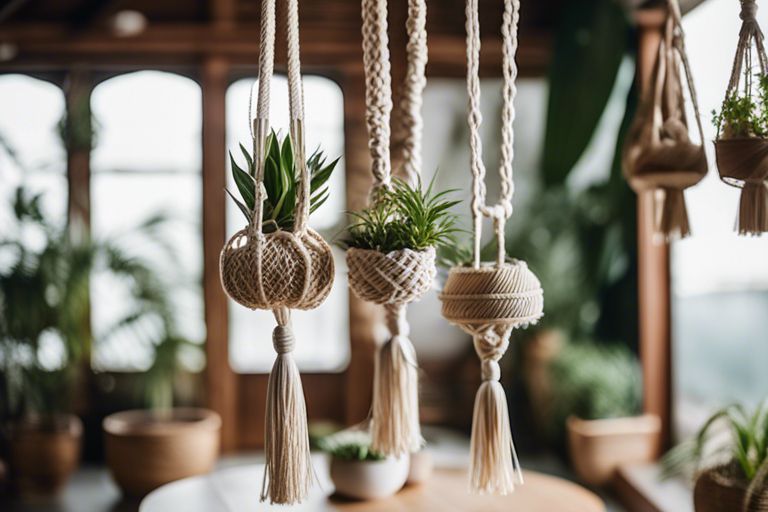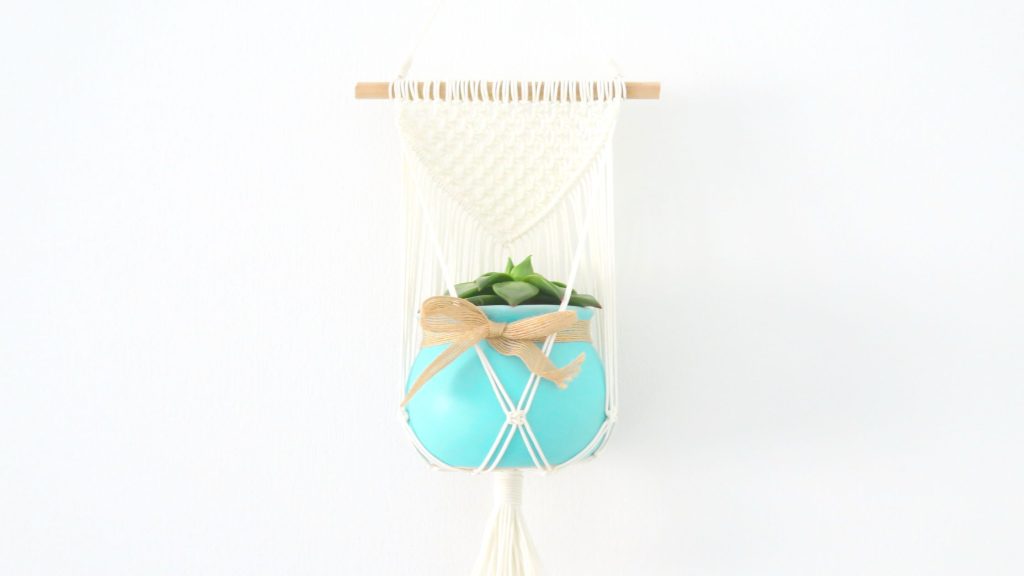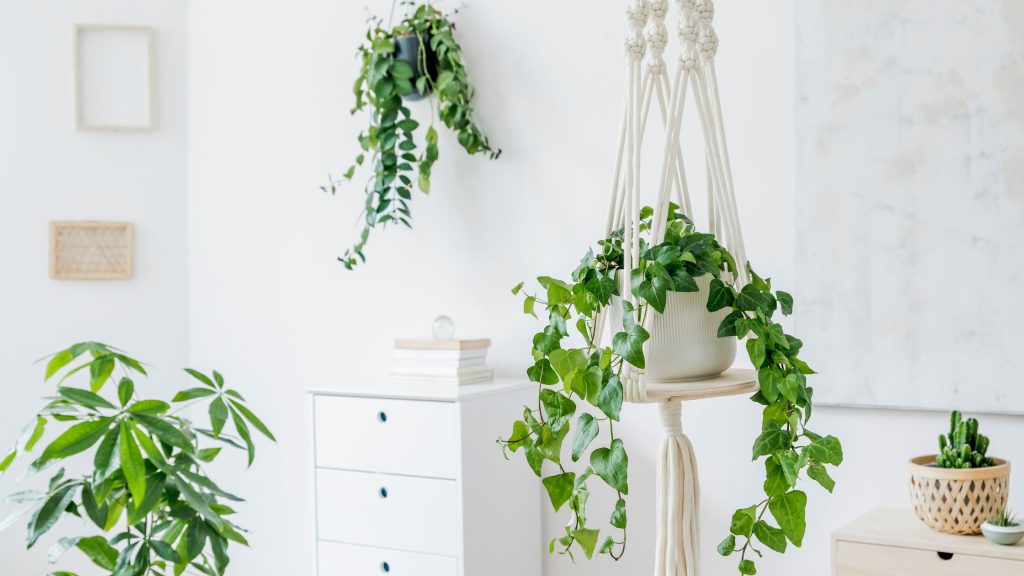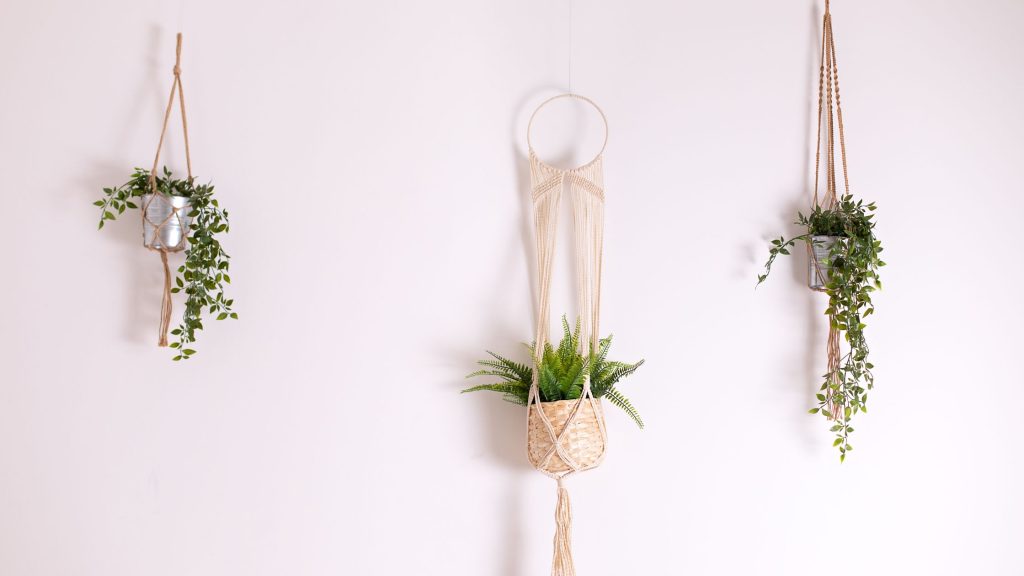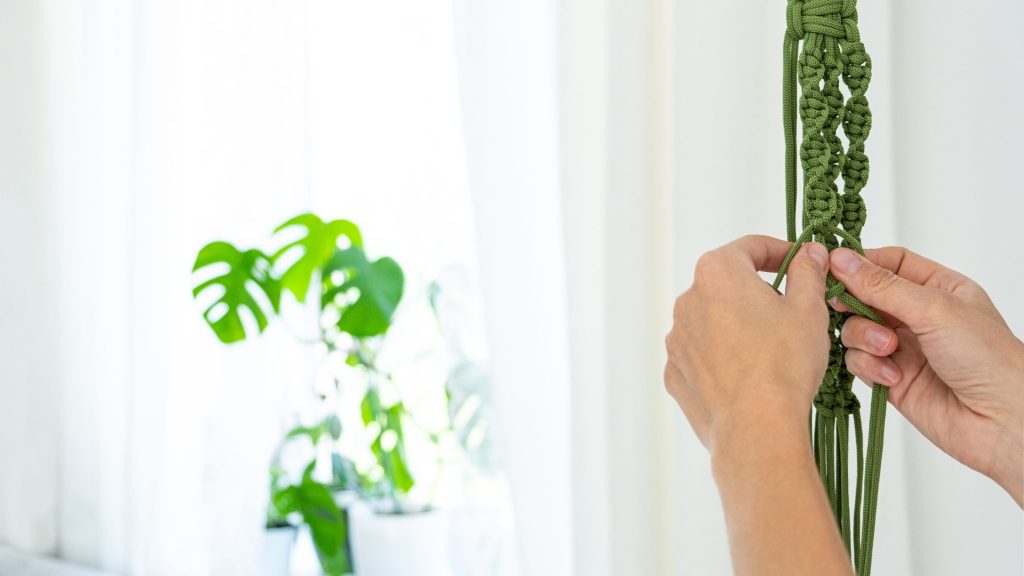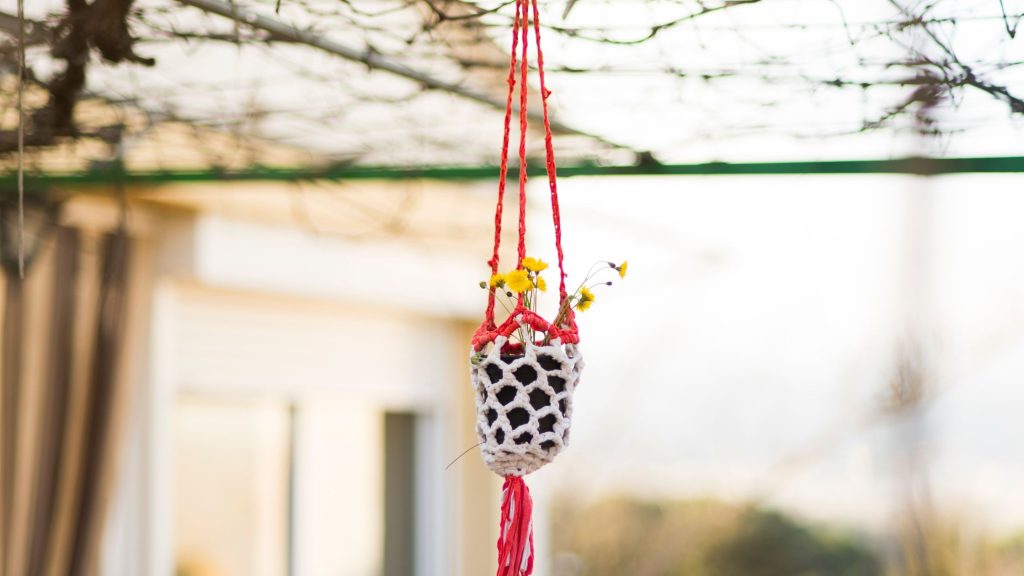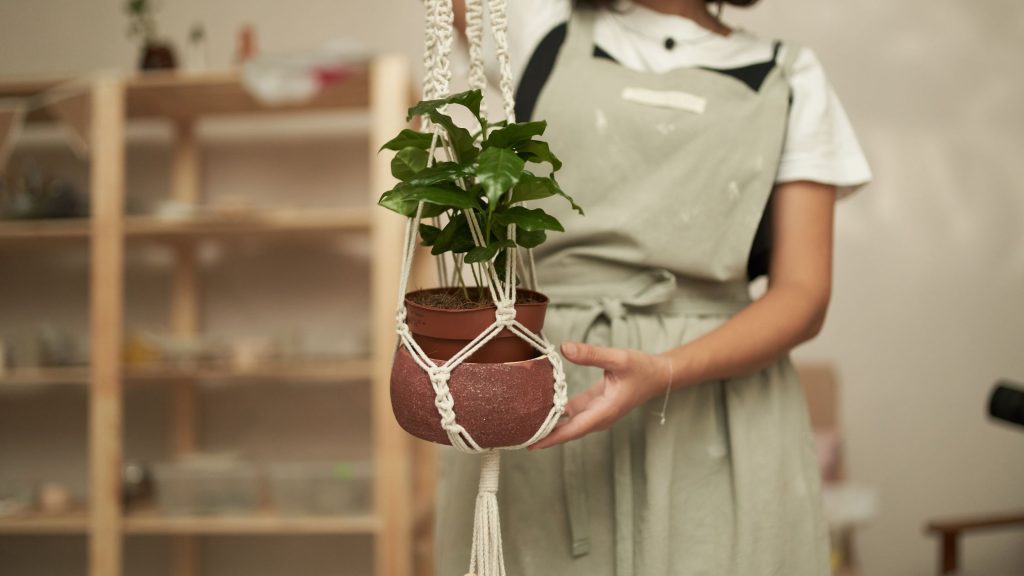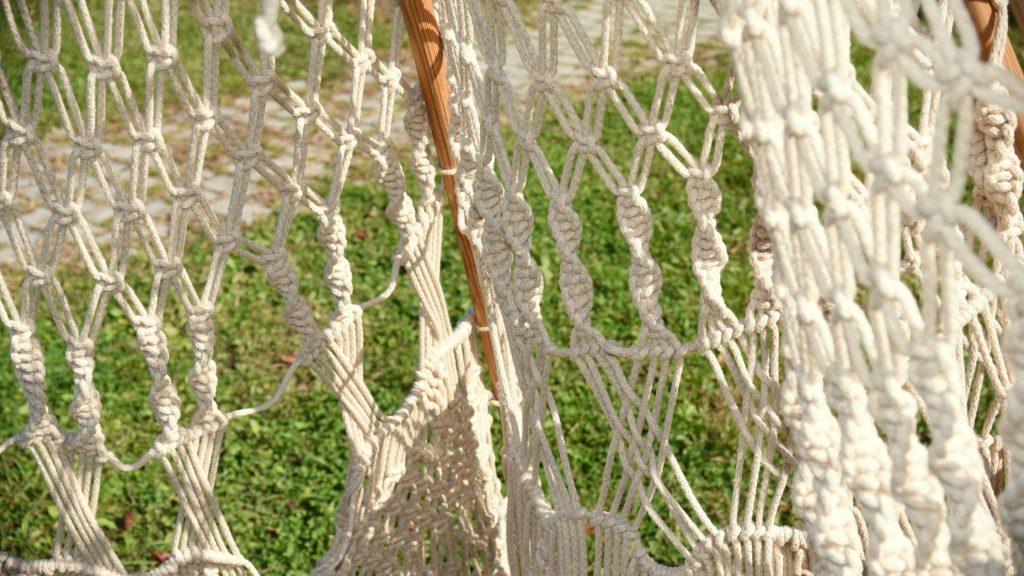By learning and practicing these essential macramé techniques for stunning plant hangers that will impress and inspire. Whether you’re a beginner or an experienced crafter, these knots are the key to unlocking your creativity and taking your macramé projects to the next level. Embrace the versatility of these knots and experiment with different combinations to achieve the perfect look for your space. With dedication and practice, you’ll be able to master these techniques and create beautiful, one-of-a-kind plant hangers that will be the envy of all who see them.
Key Takeaways:
- Versatility: Macramé offers a range of techniques that can be used to create stunning plant hangers, adding a touch of bohemian flair to any space.
- Knotting skills: Mastering various knotting techniques such as the square knot, spiral knot, and lark’s head knot is essential for creating intricate and visually appealing plant hangers.
- Beading and weaving: Incorporating beads and weaving techniques can elevate the design of a macramé plant hanger, allowing for personalized and unique creations.
- Decorative elements: Adding decorative elements such as fringe, tassels, and feathers can further enhance the aesthetic appeal of a macramé plant hanger, making it a statement piece in any room.
- Customization: With the wide range of techniques available, macramé plant hangers can be customized to suit individual preferences in terms of length, design, and materials used.
Basic Knots
The foundation of macramé techniques lies in mastering the basic knots. These knots form the building blocks for creating intricate and stunning plant hangers that will elevate the look of any space.
Square Knot
With its simple yet elegant design, the square knot is a fundamental macramé technique. It is created by tying a series of alternating half knots, resulting in a symmetrical square pattern. This versatile knot can be used to create beautiful geometric designs and is essential for any macramé project.
Wrapping Knot
An essential technique for creating texture and dimension in macramé plant hangers, the wrapping knot involves wrapping one cord around another to form a tight, secure knot. This knot is perfect for adding visual interest and can be used to cover other knots or create decorative accents in your macramé creations.
To master the wrapping knot, practice with different types of cords and experiment with various wrapping patterns to achieve the desired effect. This technique is great for adding depth and intricacy to your plant hangers, making them stand out as unique and eye-catching pieces.
Spiral Stitch
Any macramé enthusiast knows that the spiral stitch is a fundamental technique for creating intricate and stunning plant hangers. Whether you’re a beginner or a seasoned pro, mastering the spiral stitch will take your macramé creations to the next level. With a few simple steps, you can create mesmerizing patterns that will elevate your plant hangers to works of art.
Half Knot Spiral
Spiral stitch variations, such as the half knot spiral, add depth and complexity to your macramé plant hangers. By incorporating this technique, you can achieve a tighter spiral design that is visually captivating. To execute the half knot spiral, simply alternate the direction of your half knots to form a seamless and alluring spiral pattern.
Diagonal Spiral
On the other hand, the diagonal spiral introduces a unique twist to traditional macramé designs. This technique involves creating diagonal half knots, resulting in a diagonal spiral pattern that sets your plant hangers apart from the rest. By experimenting with different cord colors and textures, you can create eye-catching diagonal spiral plant hangers that are sure to impress.
Knot enthusiasts will appreciate the creative possibilities that the diagonal spiral technique offers. By incorporating this technique into your macramé plant hangers, you can experiment with various knot combinations to achieve a truly one-of-a-kind look. The diagonal spiral adds a touch of artistry and flair to your macramé creations, making them stand out in any space.
Gathering Knots
Assuming you are familiar with the basic macramé techniques, gathering knots are essential for creating stunning plant hangers. These knots are used to gather and secure the strands of cord, creating a base for the rest of the design.
Simple Gathering
To create a simple gathering knot, gather all the cords together and tie a simple overhand knot at the desired point. This will create a secure base for your plant hanger, allowing you to continue with more intricate macramé techniques.
Loop Gathering
Simple gathering knots may not always be enough for larger or heavier plant hangers. In such cases, a loop gathering knot is the perfect solution. Create a loop with the cords and tie a secure knot at the base, ensuring that the weight of the plant hanger is evenly distributed.
With loop gathering knots, you have the flexibility to create plant hangers of various sizes and weights, making them a versatile technique for macramé enthusiasts. Including loop gathering knots in your repertoire will expand your options and allow you to take on more challenging plant hanger designs.
Lark’s Head Knot
To create stunning plant hangers, mastering the Lark’s Head Knot is essential. This foundational macramé technique is used to attach cords to a hanging ring or rod, making it a must-learn for any beginner macramé enthusiast.
Standard Lark’s Head
Larks Head Knot is created by folding a cord in half and looping it around the hanging ring or rod. Insert the loose ends through the loop and pull tight to secure the knot. This simple but versatile knot forms the base for many other macramé designs.
To add a more decorative touch, experiment with using different types and thicknesses of cords. The Standard Lark’s Head is essential for building a strong foundation for your plant hanger, ensuring it can support the weight of the plant.
Reverse Lark’s Head
Head in the opposite direction, the Reverse Lark’s Head Knot is created by folding the cord in half, but instead of looping it around the ring or rod, pass the folded end through the ring or rod and pull the loose ends through the loop to tighten. This knot creates a unique look and is perfect for adding visual interest to your plant hangers.
With its ability to add dimension and texture, the Reverse Lark’s Head is a great way to elevate the design of your plant hangers and showcase your macramé skills. By incorporating different colors or materials, you can create striking patterns that will make your plant hangers stand out.
Overhand Knot
Your journey into the world of macramé plant hangers begins with the fundamental overhand knot. This simple yet versatile technique forms the basis for many other intricate knots and patterns, making it an essential skill for any macramé enthusiast.
Beading Overhand
To add a touch of elegance to your plant hanger, try incorporating beading into your overhand knots. Simply thread the beads onto your cord before tying the overhand knot, and position them as desired to create a stunning beaded pattern. This technique is perfect for adding a personalized touch to your macramé creations, making them truly one-of-a-kind.
Loop Overhand
Overhand knots can also be used to create loops for hanging your plant hangers. By incorporating looped overhand knots into your design, you can easily adjust the length and positioning of your hangers to suit different spaces and plant sizes. This technique provides versatility and functionality, ensuring that your macramé plant hangers are not only beautiful, but also practical.
Overhand knots are the building blocks of macramé, allowing you to create a wide variety of patterns and designs. By mastering the overhand knot and its variations, you’ll have the foundation you need to delve into the world of macramé plant hangers with confidence and creativity. Whether you’re a beginner or an experienced crafter, the overhand knot is an essential skill that will elevate your macramé projects to new heights.
Hitching Techniques
Keep your macramé plant hangers interesting and unique by mastering various hitching techniques. These techniques will add depth and texture to your creations, making them stand out in any space.
Double Half Hitch
Hitching techniques are the foundation of macramé, and the double half hitch is a fundamental knot to learn. This technique is used to create diagonal patterns and is essential for creating intricate designs within your plant hangers. By mastering the double half hitch, you will be able to add a whole new level of detail to your macramé creations.
Clove Hitch
An important hitching technique to add to your macramé repertoire is the clove hitch. This knot is used to secure the cords in place and is essential for building the structure of your plant hanger. The clove hitch allows you to create a sturdy foundation for your design, ensuring that your plant hanger will hold the weight of your plant securely.
It is important to master the clove hitch, as it will ensure stability and durability in your plant hangers. This knot is the backbone of many macramé designs, and understanding its intricacies will open up a world of possibilities for your creations.
Braiding Methods
Not only are macramé plant hangers a beautiful addition to any space, but they also provide an opportunity to showcase your creativity and skill with various braiding techniques. The art of macramé is rooted in the use of different types of braids, which can create intricate and visually stunning designs.
Basic Braid
One of the most fundamental braiding techniques in macramé is the basic braid. This simple yet versatile technique involves crossing three strands of cord over one another to create a structured and uniform braid. It is the foundation for many other macramé braiding techniques and is essential for mastery in the art of macramé.
Square Knot Braid
For those looking to add a bit more complexity to their macramé plant hangers, the square knot braid is a must-learn technique. This braid involves crossing two adjacent cords over the middle cord in a square knot pattern, creating a series of knots that form a distinctive and eye-catching pattern. The square knot braid adds an element of elegance and intricacy to macramé designs.
Braid techniques, intricate designs, square knot braid, elegance, complexity
Braid techniques, intricate designs, and the square knot braid add a level of elegance and complexity to macramé plant hangers. Learning these techniques will allow you to create stunning and unique designs that will stand out in any space.
Netting Stitch
For those looking to add an intricate and beautiful touch to their macramé plant hangers, the netting stitch is a must-try technique. This versatile stitch can be used to create a variety of different patterns and designs, making it a favorite among macramé enthusiasts.
Horizontal Netting
For a unique and visually striking plant hanger, try using the horizontal netting technique. This technique involves creating rows of netting that run horizontally across the hanger, resulting in a beautiful and intricate design that is sure to impress. Whether you’re a beginner or an experienced macramé artist, horizontal netting is a technique that is worth experimenting with.
Diamond Netting
Stitch For an even more detailed and impressive plant hanger, consider trying the diamond netting technique. This technique involves creating a series of diamond-shaped patterns using the netting stitch, resulting in a stunning and complex design that is sure to stand out. Whether you’re looking to create a show-stopping piece for your own home or for a friend, diamond netting is a technique that is sure to impress.
Netting stitch technique can be used to create intricate patterns and designs, adding a unique touch to your macramé plant hangers. Whether you choose to experiment with horizontal netting or diamond netting, this versatile technique is a must-try for anyone looking to take their macramé skills to the next level.
Picot Designs
Unlike other macramé techniques, picot designs can add an intricate and delicate touch to your plant hangers. These designs involve creating small loops or beads along the edges of your macramé work, giving it a more refined and elegant look.
Beaded Picot
Beaded picot is a technique that involves incorporating small beads into the picot loops, adding a touch of sophistication to your plant hangers. By using beads in your macramé work, you can create stunning patterns and designs that will make your plant hangers stand out. This technique requires careful attention to detail and precision, as you will need to thread the beads onto your macramé cords and position them correctly within the picot loops.
Looped Picot
With looped picot, you can create cascading loops along the edges of your plant hangers, adding a sense of movement and fluidity to your macramé work. This technique involves creating small loops that are then secured with a knot, resulting in a unique and eye-catching design. Looped picot can be combined with other macramé techniques to create intricate and multi-dimensional plant hangers.
Plus, looped picot can be used to create elaborate patterns and textures, making it a versatile technique for macramé enthusiasts. By mastering looped picot, you can add a whole new dimension to your plant hangers, elevating them from simple home decorations to stunning pieces of art.
Barrel Knots
Now, let’s dive into the world of barrel knots in macramé. These classic knots are essential for creating stunning and sturdy plant hangers. If you’re looking for some inspiration to get started, check out this Top 10 macrame plant hanger patterns ideas and inspiration on Pinterest.
Vertical Barrel
The vertical barrel knot is a fundamental technique in macramé. It creates a tight and secure knot that is perfect for supporting the weight of a plant hanger. Mastering this technique is essential for creating a durable and long-lasting macramé plant hanger.
For the vertical barrel knot, you’ll need to work with multiple cords to create a series of tight knots that form a vertical pattern. Pay attention to the tension of each knot to ensure an even and strong structure for your plant hanger.
Horizontal Barrel
An essential technique in macramé, the horizontal barrel knot is ideal for creating a sturdy base for your plant hanger. Mastering this knot is crucial for ensuring that your plant hanger can securely hold the weight of a potted plant.
Barrel knots are also commonly used in combination with other macramé techniques to create intricate patterns and textures in plant hangers. Experimenting with different variations of the horizontal barrel knot can help you achieve unique and eye-catching designs for your macramé plant hangers.
Conclusion
Upon reflecting on the 10 must-try macramé techniques for stunning plant hangers, it is clear that there is a wide array of options for creating beautiful and functional hangers for your indoor plants. From basic knots to more advanced patterns, there is something for every skill level and aesthetic preference. By mastering these techniques, you can elevate the look of your plants and enhance the overall ambiance of your living space.
Whether you’re a beginner looking to dip your toes into the world of macramé or an experienced crafter wanting to expand your repertoire, these techniques offer endless possibilities for creativity and personalization. With the right materials and a little patience, you can create stunning plant hangers that will be the envy of your friends and family. So, don’t hesitate to give these techniques a try and let your creativity flourish!
FAQ
Q: What are the key techniques for creating stunning macramé plant hangers?
A: The key techniques for creating stunning macramé plant hangers include square knots, spiral knots, lark’s head knot, half square knots, and gathering knots. These techniques form the foundation for a variety of impressive designs.
Q: Is macramé difficult to learn for beginners?
A: While macramé may seem intimidating at first, with practice and patience, beginners can easily master the basic techniques. There are plenty of tutorials and resources available online to help beginners get started.
Q: What type of cord or rope works best for macramé plant hangers?
A: The best type of cord or rope for macramé plant hangers is typically made of natural materials such as cotton, jute, or hemp. These materials are strong, versatile, and gives a beautiful natural look to the finished product.
Q: Can macramé plant hangers hold heavy plants securely?
A: Yes, macramé plant hangers can hold heavy plants securely as long as they are crafted using thick and sturdy cords. It’s important to choose the right type of cord and knotting technique to ensure the hanger can support the weight of the plant.
Q: Are there different styles of macramé plant hangers to choose from?
A: Yes, there are numerous styles of macramé plant hangers to choose from, including simple designs with clean lines, intricate patterns with decorative knots, and even more contemporary styles with added embellishments. The possibilities are endless and can be tailored to fit any aesthetic.

